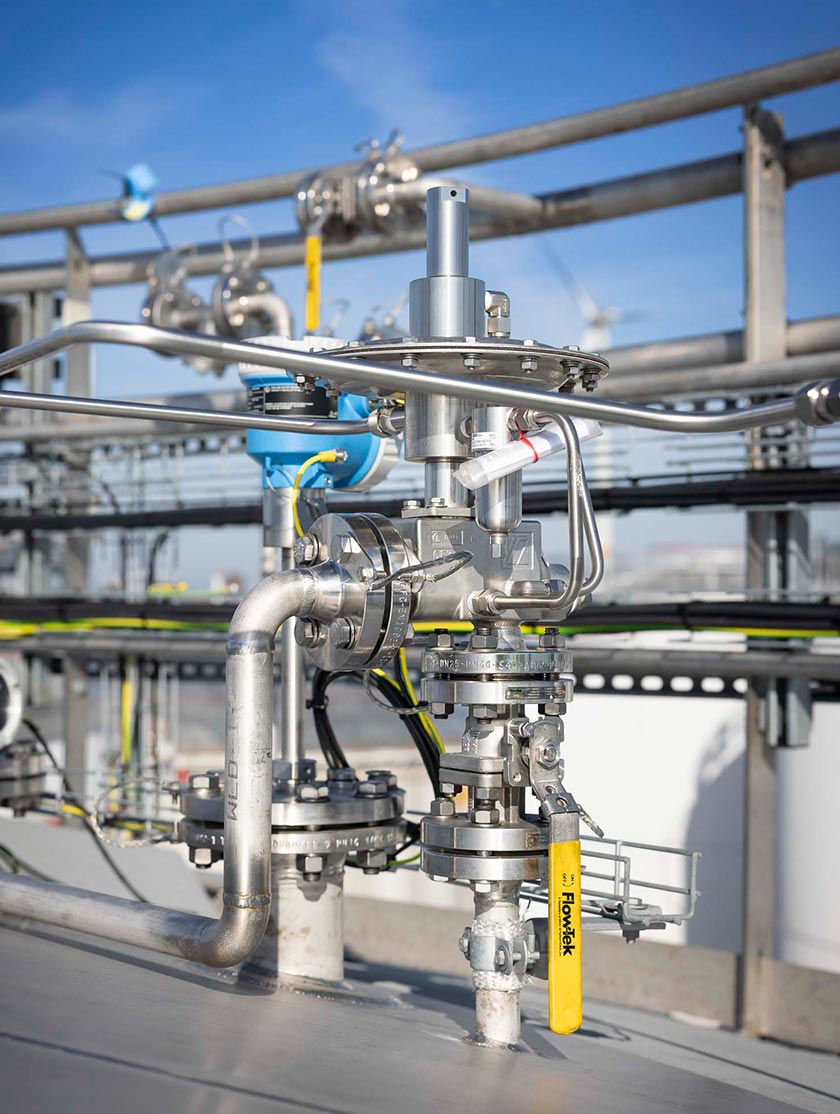How Pressure Build Impacts Back Pressure Regulator Performance
How Does Pressure Rise Affect the Performance of Back Pressure Regulators?
Back pressure regulators play a critical role in maintaining stable inlet pressure across hydraulic and industrial systems. In high-demand environments, consistent pressure control supports safe operation, system efficiency, and equipment longevity. One factor that significantly influences regulator performance is pressure rise—a key consideration when selecting the appropriate regulator for a specific application. This article examines how pressure rise affects different types of back pressure regulators and how each design responds to changing flow conditions. A clear understanding of these dynamics supports better system design and process control.
Understanding Back Pressure Regulators and Pressure Rise
A back pressure regulator is designed to maintain a constant inlet pressure by relieving excess pressure through the outlet or to the atmosphere. Unlike traditional relief valves, which respond to sudden spikes, back pressure regulators provide continuous pressure regulation. Pressure rise occurs when the inlet pressure must exceed the set point to increase flow—most noticeable in proportional-style regulators. This behavior stems from the need to overcome internal spring and actuator forces. Identifying when and where pressure rise is likely to occur helps maintain system stability and improves control accuracy.
Types of Back Pressure Regulators and Their Pressure Rise Characteristics
Back pressure regulators are generally classified into three main categories: self-contained, differential, and pilot-operated. Each type has a distinct control method, and each responds differently to increasing flow and pressure fluctuations.
1. Self-Contained Back Pressure Regulators
Self-contained regulators are the most straightforward option, operating on the principle of proportional control. These units balance inlet pressure against a spring-loaded diaphragm or piston to maintain pressure at the desired level.
- Principle of Operation: Valve position adjusts in response to system pressure, relieving excess fluid downstream. No external reference or pilot system is required.
- Pressure Build-Up Effect: As flow increases, inlet pressure must rise above the set point to generate sufficient force to open the valve. This results in pressure build-up, particularly at higher flow rates.
- Design Variations: Common in globe and angle styles. Angle valves help minimize erosion and cavitation by redirecting flow, making them more durable in aggressive applications.
- Suitability for Applications: Well-suited for steady-state systems where minor pressure deviations are acceptable. These regulators are economical and easy to maintain.
2. Differential Back Pressure Regulators
Differential back pressure regulators—also known as tracking or biasing regulators—introduce a reference pressure into the control mechanism. This design maintains a constant pressure difference between two points.
- Principle of Operation: A third pressure input (P3) is applied to one side of the diaphragm, allowing the regulator to maintain a set differential pressure across two system points.
- Pressure Ramp Effect: These regulators also exhibit pressure rise but provide more refined control. The ability to track changing system pressures helps maintain a consistent pressure differential.
- Main Applications: Often used in rotary compressor seal systems, where maintaining oil pressure just above gas pressure is essential for preventing leaks and contamination.
- Benefits: Enhanced equipment protection, better control under fluctuating pressures, and increased system safety.
3. Pilot-Operated Back Pressure Regulators
Pilot-operated regulators use a two-stage design, where a smaller pilot valve directs the movement of a larger main valve. This setup offers both proportional and reset control for improved accuracy.
- Operating Principle: The pilot monitors inlet pressure and adjusts the actuator on the main valve. The use of process fluid energy enables fast, precise control.
- Pressure Build-Up Effect: These regulators significantly reduce pressure rise. The pilot actively resets valve position to keep inlet pressure closer to the set point, even under high flow demand.
- Complexity and Features: While more complex and sometimes requiring instrumentation or power input, they provide highly responsive control in demanding environments.
- Applications: Ideal for systems that experience frequent pressure swings and require tight, reliable pressure control.
Conclusion
Pressure rise is an inherent characteristic in back pressure regulation that can influence process stability and performance. Self-contained regulators demonstrate the most noticeable pressure build-up, making them best suited for stable systems with minimal variability. Differential regulators offer enhanced control by maintaining a constant pressure margin between two points, which is vital in safety-critical applications. Pilot-operated regulators provide the most accurate control with minimal pressure rise, making them a strong choice for dynamic systems with variable flow demands. Selecting the right regulator type ensures more reliable pressure management, longer equipment life, and improved system integrity in industrial applications.
New to Back Pressure Regulators? Start with Expert Support |
Optimizing your systems with the right back pressure regulator is crucial for enhanced efficiency and control. Understanding these components is the first step. Explore our full range of back pressure regulators or complete the Regulator Sizing Form to find the perfect back pressure regulator for your specific application needs.
Ever Wonder How Back Pressure Regulators Work? Watch This |
See how a back pressure regulator automatically controls upstream pressure and protects your system using a smart balance of spring tension and diaphragm movement—perfect for keeping your operations running smoothly.





